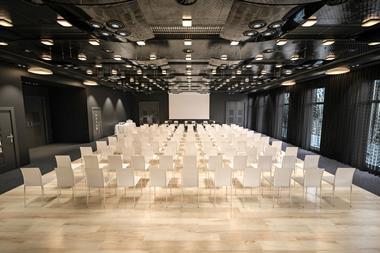Ecclesiastical’s art and private client business director says underinsurance is still ‘prevalent’, so empowering broker partners to have informed conversations with clients is paramount
The Covid-19 pandemic has emphasised that “brokers are key in the high net worth space” because “clients have become more savvy” and used their time in lockdown to review coverage options and premiums, according to Sarah Willoughby, art and private client business director at insurer Ecclesiastical.
Although this trend initially started “pre-Covid”, Willoughby believes brokers are now “having to do a lot of work explaining the different types of cover within different policies and the differences between high net worth insurers”, especially as high net worth (HNW) clients have “had a little bit more time to investigate and think about what they want to insure and possibly what they didn’t want to insure and they’d take the risk themselves”.
This is where “brokers play a massive part in the high net worth space”, Willoughby told Insurance Times.
She continued: “You need their expertise and knowledge to help guide your HNW clients.
“Each HNW client has unique requirements. It’s not your usual two-up, two-down house. It’s got lots of different scenarios in there and their lifestyle drives different requirements as well about what they want and what they collect and their possessions, so brokers are key in the HNW space.
“You cannot get advice and knowledge with technology basically. [Clients] couldn’t go and make sure they were covered completely on an online application because there would be so many things missing and they want to really enquire about the cover that we can offer them as well.”
Underinsurance risk
Willoughby additionally noted that insurers like Ecclesiastical still need to work closely with brokers on tackling a key challenge that is “still prevalent” within the HNW market – underinsurance.
“I still think underinsurance is the main challenge for us as insurers and brokers and making clients realise that they need to keep reviewing their contents sums insured, maybe on an annual basis,” she explained.
“Not necessarily getting a valuation on annual basis, but just thinking about the things you’ve been given, items of jewellery, what you’ve purchased, what you’ve added to your home and just thinking ‘I’m probably out of step and I need to increase my sums insured on that’.

“General contents is sometimes the element that gets missed slightly because we all add things and never think ‘actually I need to increase my insurance’ because we just replace things.”
An example here could be a client who has continued to buy designer or branded handbags or purses, storing them in a wardrobe where they are potentially easier to forget about. Even items such as luxury bed linens or towels would need to be replaced at the correct value following a total loss or escape of water (EOW) claim, Willoughby added.
“We’ve got to redo that element again, all insurers and brokers,” she said. “We’re all aware of [underinsurance] and there will be brokers having conversations with clients, but understanding that if [clients have] a total loss or a partial loss, [they would] want everything replaced with the correct value and that’s all we want - to make sure [clients are] insured correctly for it.”
Empowering conversations
In terms of how insurers can support HNW brokers with issues such as underinsurance, Willoughby said “it’s about giving them advice, knowledge and expertise of any elements that could affect or impact a HNW client’s lifestyle”.
This includes helping brokers brush up their knowledge on fine art and artists, for example, or the fluctuating value of gold, silver and diamonds. This empowers brokers “to have the knowledge that they can open up conversations outside of new business and renewal cycles”, Willoughby explained.
If a broker can identify whether their client’s possessions have increased in value – such as a particular painting – they can then also advise on whether current sums insured need to be increased, preventing underinsurance.
Information around physical and cyber security are other factors Ecclesiastical talks to its broker partners about, however Willoughby feels that end clients still need to be better educated about preventative measures, such as water leak devices – something brokers can obviously assist with.
She explained that although many HNW clients understand the disruption and impact of theft claims, combating fire and EOW risks are not front of mind – even though “escape of water is our largest peril within the HNW space for claims”. This is why Ecclesiastical has partnered with claim mitigation solution LeakBot.
Willoughby thinks HNW clients wrongly believe that “they are purchasing something that isn’t going to do anything” when buying preventative tools.
However, these devices could “save them moving out of their home. It would save them from a lot more of their contents getting damaged or very prized, personal, sentimental items getting damaged in fire or escape of water that you can’t replace”.
She added: “We need to always think about our HNW clients and how they live their life and what they buy to make sure they are protected correctly on their insurance covers. Any knowledge that we can provide to help [brokers] have that conversation, the better.”
Hosted by comedian and actor Tom Allen, 34 Gold, 23 Silver and 22 Bronze awards were handed out across an amazing 34 categories recognising brilliance and innovation right across the breadth of UK general insurance.





















































No comments yet